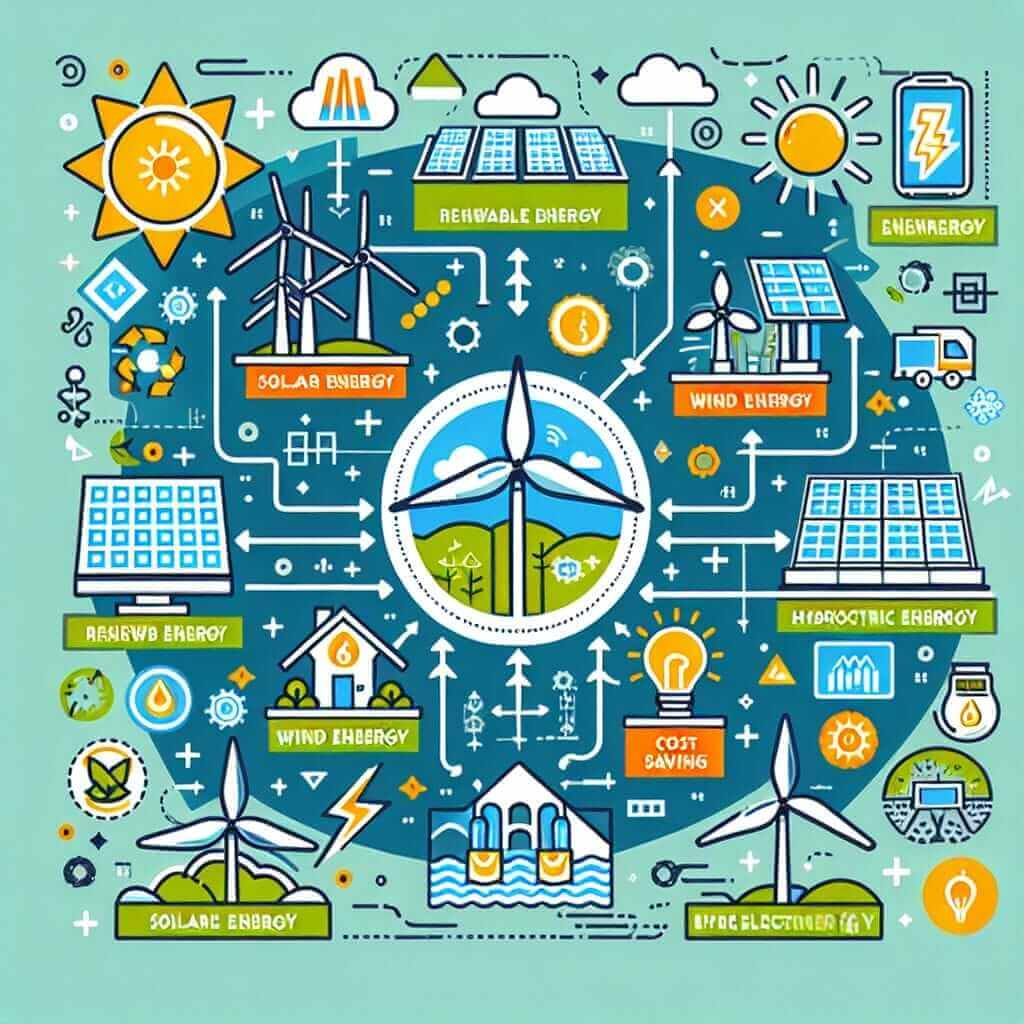The IELTS Reading section challenges candidates with various text types and question formats. One emerging and highly relevant topic is how technology is enhancing renewable energy efficiency. This topic not only aligns with contemporary issues but also provides a solid framework for developing critical reading skills. Understanding this theme can be particularly useful as it frequently appears in the IELTS exam due to its global significance.
IELTS Reading Practice: Technology and Renewable Energy Efficiency
Reading Passage
Renewable Energy Efficiency: Technological Advancements
Renewable energy sources like solar, wind, and hydroelectric power are essential for a sustainable future. Recent technological advancements have significantly enhanced the efficiency and effectiveness of these renewable energy systems. Innovations in materials science, artificial intelligence, and smart grid technology are at the forefront of these improvements.
Materials Science Innovations
One of the key areas where technology has made a substantial impact is in materials science. New materials, such as perovskite-based solar cells, are more efficient at converting sunlight into electricity compared to traditional silicon-based cells. Moreover, advanced manufacturing techniques have made it possible to produce these cells at a lower cost, making solar energy more accessible.
Artificial Intelligence and Predictive Modeling
Artificial intelligence (AI) is another technological advancement driving renewable energy efficiency. AI algorithms can predict energy production and consumption patterns, enabling more efficient energy management. For instance, wind farms can use AI to optimize turbine operations based on real-time weather data, maximizing energy output while reducing wear and tear on equipment.
Smart Grid Technology
Smart grids represent a significant advancement in the distribution and management of renewable energy. These grids use digital communication technology to monitor and manage electricity in a more efficient and reliable manner. By integrating renewable energy sources and using real-time data, smart grids can reduce energy losses and improve the stability of the power supply.
Questions
Multiple Choice
-
What is the primary benefit of perovskite-based solar cells mentioned in the passage?
A. They are cheaper to manufacture.
B. They last longer than silicon-based cells.
C. They are more efficient at converting sunlight into electricity.
D. They are more environmentally friendly. -
How does AI contribute to energy efficiency in wind farms?
A. By reducing the number of turbines needed.
B. By predicting energy production and optimizing operations.
C. By manufacturing turbines at a lower cost.
D. By increasing the durability of turbines.
True/False/Not Given
-
True/False/Not Given: New materials in renewable energy are more expensive to produce.
-
True/False/Not Given: Smart grids can only integrate solar and wind energy sources.
Matching Information
-
Match the following advancements with their corresponding benefits:
- i. Materials Science
- ii. Artificial Intelligence
- iii. Smart Grid Technology
A. Improves stability of power supply
B. Enhances efficiency and cost-effectiveness of solar cells
C. Optimizes energy production in real-time
Answer Key
- C. They are more efficient at converting sunlight into electricity.
- B. By predicting energy production and optimizing operations.
- False. The passage states that advanced manufacturing techniques have made it possible to produce these cells at a lower cost.
- Not Given. The passage does not specify that smart grids can only integrate solar and wind energy sources.
-
- i. Materials Science – B. Enhances efficiency and cost-effectiveness of solar cells
- ii. Artificial Intelligence – C. Optimizes energy production in real-time
- iii. Smart Grid Technology – A. Improves stability of power supply
Common Mistakes
- Misinterpreting the context of technical terms such as “perovskite-based solar cells” and “smart grids.”
- Confusing the benefits of AI and materials science innovations.
- Overlooking specific details that distinguish False/Not Given statements.
Vocabulary
- Materials Science (n) – the study of the properties and applications of materials of construction or manufacture (e.g., ceramics, metals, polymers, and composites).
- Efficiency (n) – the ratio of the useful output of energy to the input energy.
- Perovskite (n) – a type of crystal structure found in certain materials that are used to enhance solar cell performance.
- Predictive Modeling (n) – a process that uses statistical techniques to create models that can predict future outcomes based on historical data.
- Smart Grid (n) – an electrical grid that uses information and communication technology to improve the efficiency and reliability of electricity distribution.
Grammar Focus
- Relative Clauses: New materials, such as perovskite-based solar cells, are more efficient at converting sunlight into electricity compared to traditional silicon-based cells.
- Present Perfect Tense: Recent technological advancements have significantly enhanced the efficiency and effectiveness of these renewable energy systems.
Tips for High Scores in IELTS Reading
- Skimming and Scanning: Develop your ability to quickly identify the main ideas and specific details.
- Practice with diverse topics: Familiarize yourself with various themes, including technological advancements and environmental issues. This will help you quickly adapt to any passage topic.
- Time Management: Allocate your time wisely, ensuring you have ample time to answer all questions.
- Identify Keywords: Highlight and understand keywords in both the passage and the questions to improve accuracy.
For more detailed discussions on related topics, you can explore our article on Technological Advancements in Energy Efficiency.

Continuously practicing with topics like this and following these steps will help you improve your IELTS Reading skills and score high in your exam. Good luck!